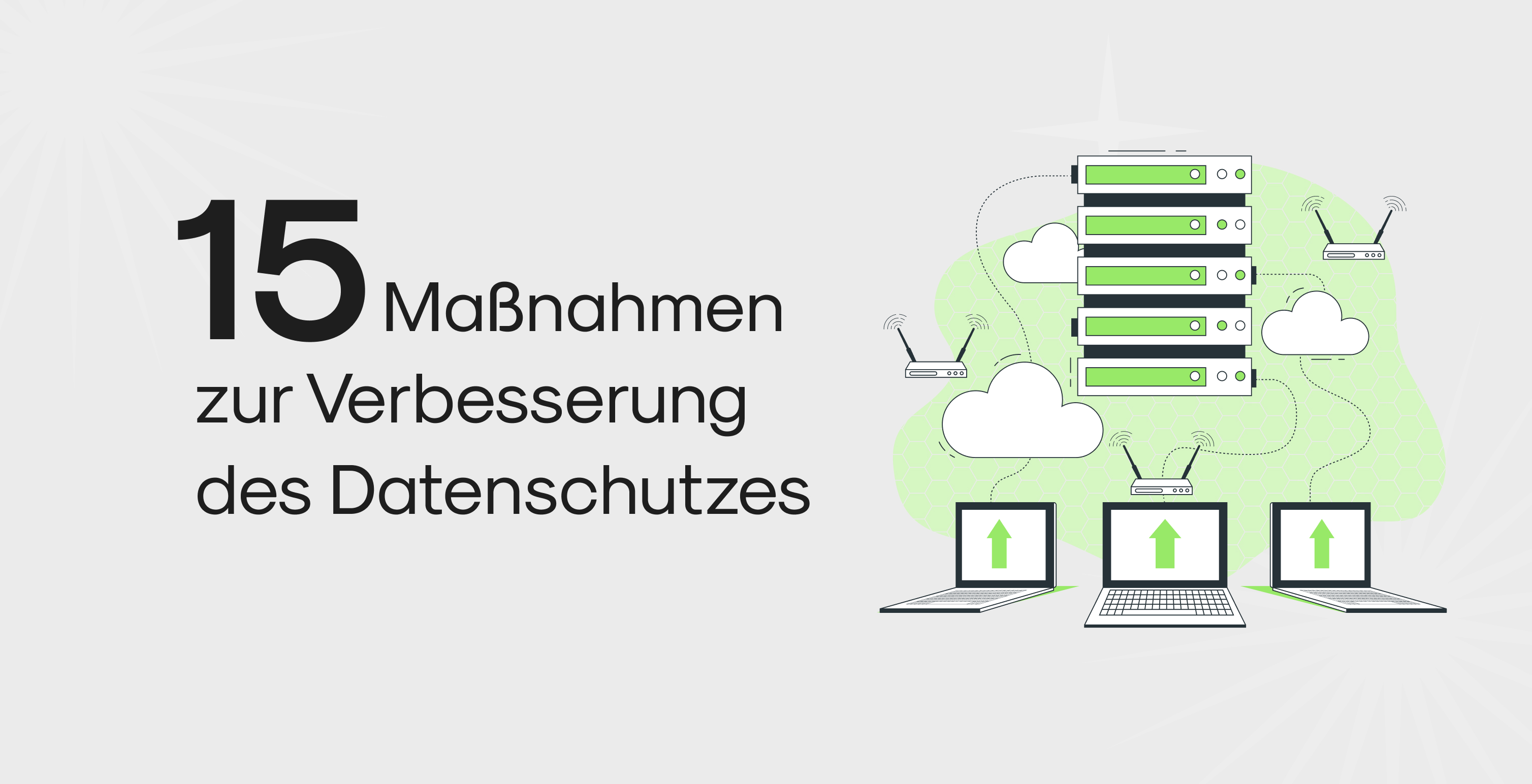Why Data Privacy on Websites Is Essential
In today’s digital era, data privacy is not just a legal requirement but also an ethical obligation. Data breaches and online tracking are widespread issues that can significantly undermine trust in a website. Companies looking to have a website created, whether in Berlin or elsewhere, should prioritize robust data privacy measures from the very beginning to effectively protect their users' privacy.
Alongside implementing such data privacy measures, reliable server solutions play a critical role. Secure and high-performance server solutions not only ensure your website's availability but also safeguard sensitive user data from unauthorized access.
Below, we present 15 proven data privacy measures to help you enhance user privacy while building trust. With the right server solutions and a clear focus on data protection, you can lay a solid foundation for the long-term success of your website.
What You Need to Know:
- Reduce the use of ads and third-party scripts.
- Focus on data minimization and SSL encryption.
- Implement strong access controls and explicit consent models.
- Use open-source software for greater transparency.
- Allow users to control their cookie settings.
15 Proven Tactics to Improve Website Privacy
1. Eliminate Ads to Protect Privacy
Ads are often perceived as invasive, especially when personalized based on tracking data. By eliminating intrusive ads, you not only protect user privacy but also enhance the user experience. Instead, collaborate with privacy-focused companies that want to advertise their products without compromising user data. This can also open alternative revenue streams and strengthen user trust in your brand.
2. Minimize the Use of Third-Party Scripts
Third-party scripts, such as those used by many analytics and marketing tools, can pose potential security risks. Consider switching to privacy-friendly analytics platforms like Plausible or Matomo, which do not collect personal data. For payment processes, it is advisable to forward these directly to trusted payment providers to minimize data processing on your end.
3. Implement Data Minimization
The principles of data minimization emphasize collecting only the data that is strictly necessary. This not only reduces the risk of data breaches but also builds user trust. Clearly communicate which data is collected and for what purpose. A transparent data policy can enhance trust and ensure compliance with privacy laws.
4. Use SSL Encryption for Secure Data Transmission
Switching to HTTPS is now mandatory for any website transmitting data. SSL encryption protects data from eavesdropping during transmission between the user and the server. Regularly reviewing and renewing SSL certificates is essential to maintain security.
5. Provide Privacy Policies in Plain Language
A clear and understandable privacy policy is crucial to assure users that their data is handled responsibly. Avoid legal jargon and explain in simple terms what data is collected, how it is used, and what rights users have. This increases transparency and trust in your website.
6. Introduce End-to-End Encryption
End-to-end encryption ensures that only the intended parties can access the transmitted information. This is particularly important for applications processing sensitive information such as personal data or payment details. Regular security audits are necessary to ensure proper encryption implementation.
7. Client-Side Data Processing
By shifting certain data processing tasks, such as form validation, to the client (the user’s browser), you can reduce the amount of data sent to your server. This not only increases security but can also improve website performance by minimizing data transmission over the network.
8. Switch to Static Websites
Static websites do not have dynamic content that needs to be generated for each page load, significantly reducing the attack surface. These websites are faster and more secure as they are less vulnerable to attacks such as SQL injections. Additionally, they are easier to host and scale, offering further benefits for IT security and data protection.
9. Implement Strong Access Controls
Access controls are crucial for protecting sensitive data. Implement role-based access controls to ensure that only authorized users can access specific data or functions. Regularly monitor and log who accesses what data to quickly identify and close security gaps.
10. Use Blockchain for Identity Verification
Blockchain technology can be used to verify user identities without storing private data on your servers. This decentralized method gives users more control over their personal information and significantly reduces the risk of data leaks.
11. Develop Your Own Privacy-Friendly Analytics Tools
If you want to avoid third-party analytics tools, consider developing your own solutions tailored to your needs that do not store personal data. This gives you full control over the collected data and can help you comply with privacy regulations.
12. Avoid User Dashboards
Consider whether a user dashboard is truly necessary. Often, minimalist forms or alternative solutions can provide the same functionality without requiring personal data to be stored on your server. This reduces the attack surface and enhances data security.
13. Introduce Explicit Consent Models
Allow users to actively opt in to data collection and change their privacy settings at any time via a centralized privacy dashboard. This promotes transparency and gives users control over their personal information.
14. Clarify Cookie and Privacy Policies
Your cookie policies should be easily understandable and accessible to users. Provide clear information about which cookies are used and for what purpose. Allow users to easily change their cookie preferences to build trust.
15. Minimize Personal Data Through Gmail OAuth
Using OAuth services like Gmail OAuth can minimize data sharing with third parties. This protects user rights and ensures that only the necessary information is shared. Data should only be stored as long as it is truly needed.
By adopting these proven strategies, you can enhance your website users' privacy while building trust. Data protection is more than just a legal obligation—it is a critical factor for your website’s success.
Conclusion
Implementing effective data privacy measures on your website is essential to protect your visitors from the risks of data breaches and unwanted tracking. The 15 measures presented here offer a comprehensive strategy to significantly improve the security and privacy of your website. If you are planning to have a website created in Berlin, it is particularly important to consider these measures from the outset.
From reducing intrusive ads to implementing SSL encryption and privacy-friendly analytics tools, every element plays an important role in the overall picture of IT security and data protection. Using open-source software and introducing explicit consent models give your users control over their data while enhancing your image as a trustworthy provider. Having a website created in Berlin also means you can work with local experts to meet your privacy requirements optimally.
By integrating these proven practices, you not only create a safer environment for your users but also position your website as a leader in data privacy. This can improve user experience, increase search engine visibility, and ultimately contribute to your website’s success. If you are considering having a website created in Berlin, ensure that data privacy is a central part of your project. Data protection is an investment in the future of your online presence and the trust of your users.
Image source: North IT Group



